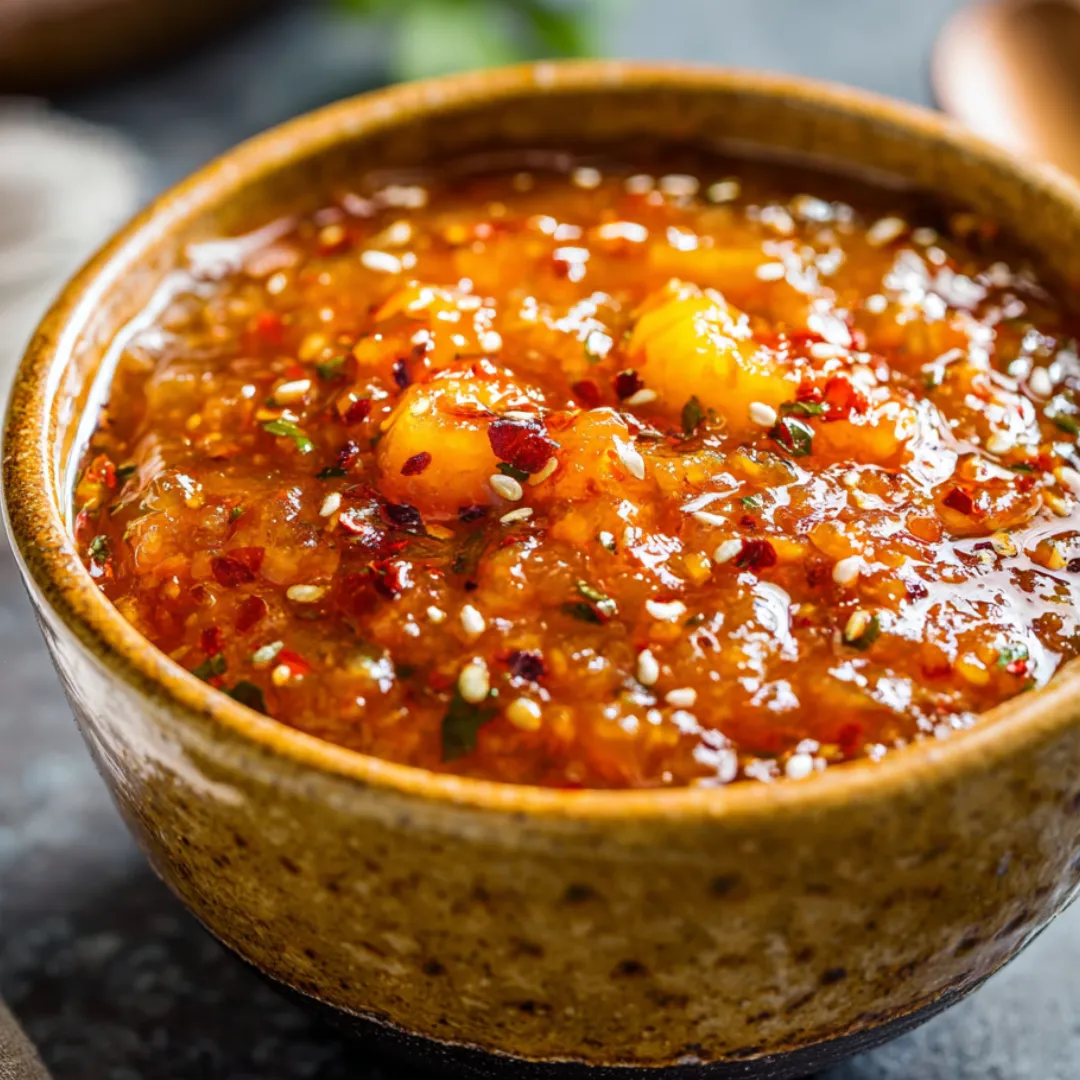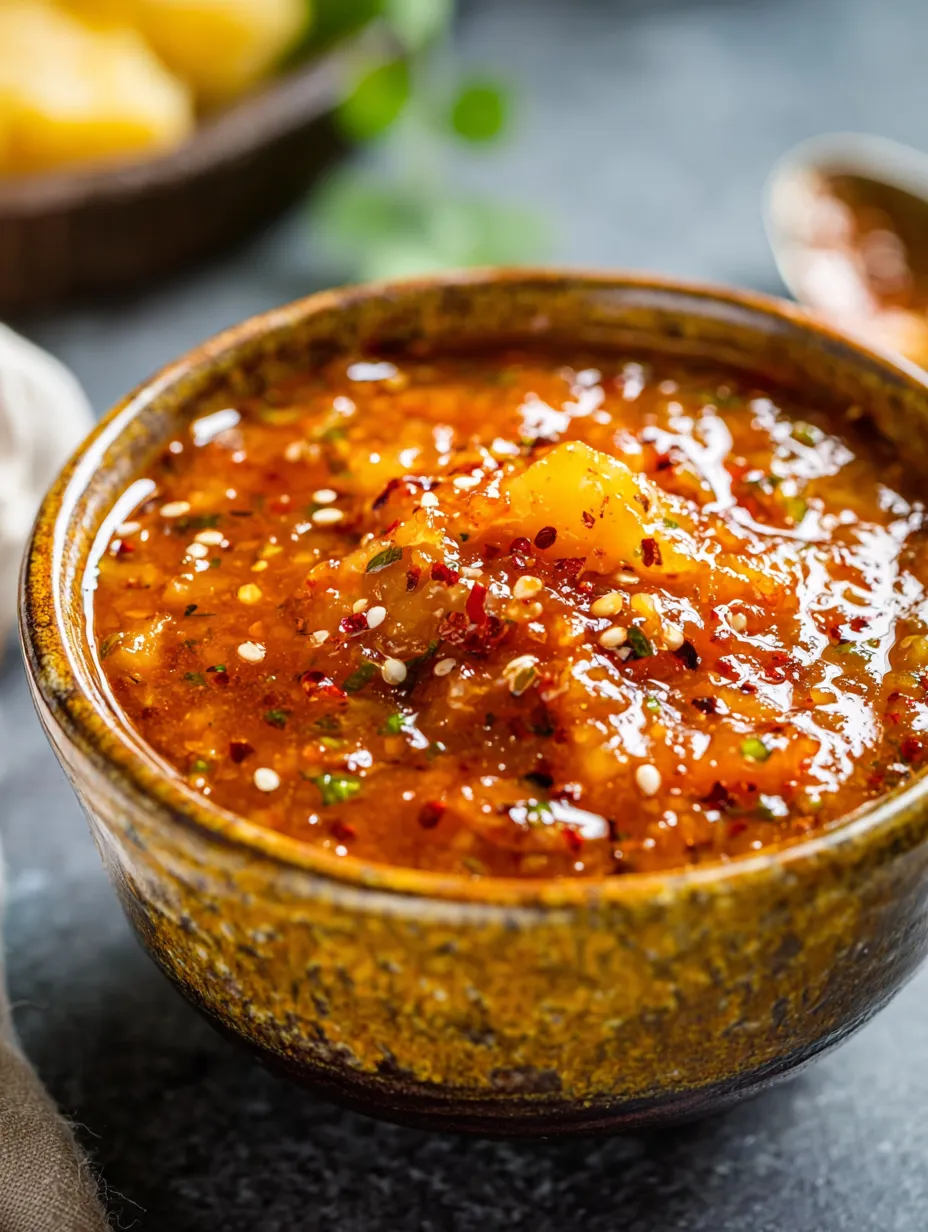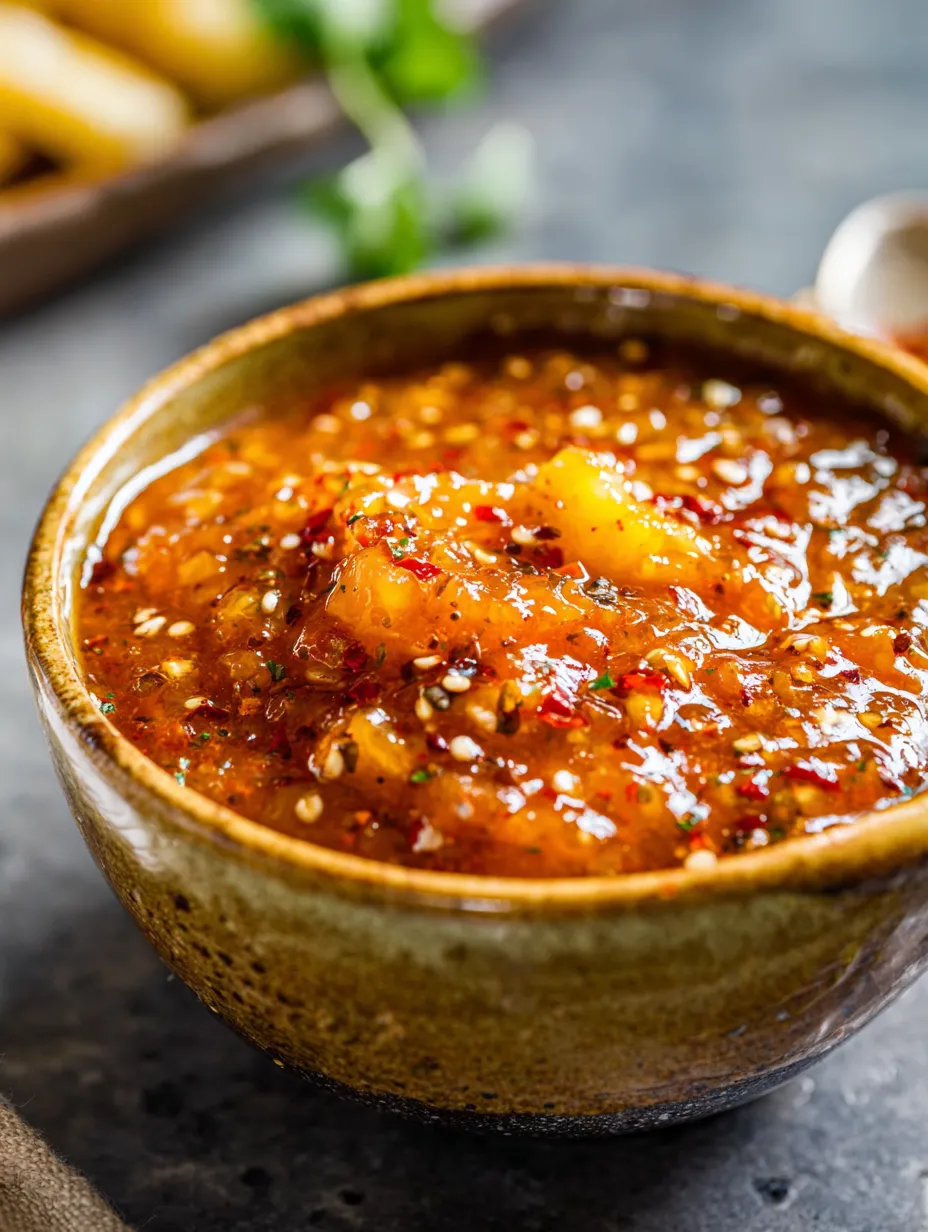 Save
Save
The first time I made this pineapple chipotle salsa, it was a spur-of-the-moment idea while rummaging through my fridge for something to brighten up our usual taco night. The smoky aroma from the broiler caught everyone’s attention right away—it felt like the salsa was telling its own story, balancing sweet, heat, and charred depth all at once.
I stumbled on this broiling technique after years of blending raw salsas that sometimes felt flat or one-note. Toasting under the broiler unlocked a rich smoky note I hadn’t expected, forever changing the way I think about salsa bases.
Essential Ingredients
- Tomatillos: the salsa’s tart backbone; pick ones that are firm with husks that are slightly dry and papery for freshness
- Pineapple: brings juicy sweetness to temper the heat; fresh and firm is ideal, but canned rings work in a pinch if patted dry
- Chipotle peppers in adobo: contribute smoky heat; start with one and add more to taste to control spice levels
- Garlic cloves: provide depth and savory warmth; whole cloves char beautifully under broiler adding gentle roasting notes
- Onion (white preferred): adds pungency and sweetness when charred; pick onions that are firm and free of blemishes
- Kosher salt: essential for bringing all flavors together; use sparingly and adjust as you taste
Shopping tip: Choose firm, unbruised produce and for canned ingredients, look for minimal additives to keep salsa fresh and clean in flavor.
Cooking Process
- Charring the Ingredients – Transform from raw to smoky magic:
- Lining a baking sheet with foil, arrange halved tomatillos, whole garlic cloves, pineapple slices, and onion rounds under the high broiler. This step caramelizes natural sugars and brings out a deep smoky character crucial for vibrant flavor.
- Flipping for Even Roast – Balance char and moisture:
- Turning everything halfway through ensures even blistering without burning. Watch closely; each broiler is different and those few extra minutes can mean the difference between perfect charring and bitter blackness.
- Blending to Chunky Perfection – Keep some texture alive:
- Transfer your broiled bounty into a blender or food processor along with chipotle peppers. Pulse briefly so the salsa remains chunky with little bites of ingredients instead of a homogenous puree—this gives it lively texture and mouthfeel.
- Seasoning and Tasting – Fine-tune for balance:
- A sprinkle of kosher salt falls last to marry all flavors. Taste, adjust, and stir well before serving to your favorite Mexican dishes or as a lively chip dip.

Recipe Highlights
Once, I accidentally blended the salsa too long, turning it into a smooth puree. At first, I was disappointed by the loss of texture, but surprisingly it made a brilliant base for layered dips—proof that every 'mistake' can become a new favorite twist.
Seasonal Adaptations
In cooler months, swap pineapple for roasted butternut squash or roasted sweet potatoes for a comforting twist that still plays well with smoky chipotle. Summer invites extra fresh herbs like cilantro or mint stirred in at the end for brightness.
Make-Ahead Strategies
The salsa tastes even better the next day, so make it ahead and store tightly sealed in the fridge for up to a week. It’s also freezer-friendly in a sealed container for up to a month—thaw gently and stir before serving.
Cooking Secrets
- Keep a close eye under the broiler; the difference between perfect char and burnt is seconds.
- Resist over-pulsing your ingredients; the texture carries the personality here.
- Let your salsa rest overnight when possible; smoky and sweet notes harmonize most fully after sitting.

Frequently Asked Recipe Questions
- → How do you prevent the salsa from becoming too smooth?
Blend or pulse the ingredients briefly to retain a chunky texture instead of a completely smooth puree, preserving pleasant bite and texture.
- → Can I use canned pineapple for this salsa?
Yes, canned pineapple rings, patted dry, work well and provide a similar sweetness and moisture level as fresh pineapple slices.
- → What’s the best way to broil the ingredients evenly?
Broil on the top rack for 10 minutes, then flip everything and broil another 5 minutes while watching closely to avoid charring too much.
- → Can other onions be substituted for white onion?
Yes, yellow, Vidalia, or red onions can be used, though white onion provides a mild, balanced flavor preferred in this blend.
- → How should this salsa be stored and how long does it last?
Store airtight in the refrigerator for up to a week. Flavors improve over time as they meld and deepen.
